Animal movement technologies have already significantly advanced our understanding of the natural world, from uncovering previously mysterious migration patterns and key movement corridors to demonstrating the impacts of anthropogenic pressures and climate change. Continuing advances in the development of technologies for collecting and transmitting bio-logging data, combined with the increased availability of high-resolution environmental data and analytical developments in movement modelling, are opening doors to novel applications. However, there are still major gaps in the space, including mobilizing movement data to translate data from tracking devices into insights for application in policy and practice. This group is a place for the animal movement community to connect and discuss our efforts to advance the field.
Resources for beginners
Learn about WILDLABS Animal Movement research projects
- MoveBON Initiative Announcement
- MoveBON Follow-Up Discussion
- Virtual Meetup Season 4: Tracking Progress (A WILDLABS research project on movement ecology)
Group curators
- @TaliaSpeaker
- | She/her
WILDLABS & World Wide Fund for Nature/ World Wildlife Fund (WWF)
I'm the Executive Manager of WILDLABS at WWF



- 23 Resources
- 64 Discussions
- 31 Groups
- @lhughey
- | she/her
Smithsonian Conservation Biology Institute
I am an ecologist and program manager with experience leading collaborative research projects in international settings. I specialize in the application of animal tracking data to conserve migratory species on a changing planet.



- 6 Resources
- 10 Discussions
- 3 Groups
No showcases have been added to this group yet.
Coach, consultant, volunteer, and donor



- 0 Resources
- 58 Discussions
- 12 Groups
Soil science, droughts effect of poverty, human rights advocate, wage equality in Europe, Drones in Digital Education




- 4 Resources
- 11 Discussions
- 18 Groups
- @aswathyjose86
- | she
- 0 Resources
- 0 Discussions
- 9 Groups
NatureHelm empowers businesses to proactively manage nature-related risks and opportunities across their operations and value chains. We provide a cutting-edge platform that transforms complex, fragmented biodiversity data into clear, site-specific insights.

- 0 Resources
- 1 Discussions
- 4 Groups
Worked as a mechanical engineer for a defence co, then software engineer, then for a research lab specialising in underwater robotics.



- 1 Resources
- 144 Discussions
- 16 Groups
Aarhus University
Biologist and Research Technician working with ecosystem monitoring and research at Zackenberg Research Station in Greenland





- 19 Resources
- 272 Discussions
- 7 Groups
Field Assistant for Nature-Mates Nature Club working on Butterfly Conservation Projects in India
- 0 Resources
- 0 Discussions
- 4 Groups
- @anoibi
- | He
I am a conservation biologist who is using modern technology to understand the ecology of wildlife. Such technologies include bioacoustics, Gis and movement ecology tools. I am very hopeful that these courses will greatly impart on my skill set, and I am committed to learning.
- 0 Resources
- 0 Discussions
- 4 Groups
- @Arjun_Viswa
- | S
- 0 Resources
- 0 Discussions
- 26 Groups
- 0 Resources
- 0 Discussions
- 12 Groups
- 0 Resources
- 0 Discussions
- 18 Groups
- @Ribnu
- | He/Him
- 0 Resources
- 0 Discussions
- 6 Groups
Un ambicioso proyecto internacional está usando transmisores satelitales para monitorear los viajes migratorios de ballenas francas australes, permitiendo entender sus sorprendentes patrones de desplazamiento en tiempo...
7 August 2025
If you're a Post-Doctoral Fellow, a PhD student, or a member of the research staff interested in applying your computational skills to support active research publications, please read on to learn about the Cross-...
5 August 2025
Each quarter, Holohil will be supporting projects by donating up to CAD$2,500.00 toward the purchase of Holohil transmitters. We will also pay all shipping charges (Note: importation duties and taxes are the receiver’s...
4 August 2025
The Marine Innovation Lab for Leading-edge Oceanography develops hardware and software to expand the ocean observing network and for the sustainable management of natural resources. For Fall 2026, we are actively...
24 July 2025
Link
Firetail now features a fresh account over at Bluesky - follow us for updates on animal tracking, bio-logging and, of course, upcoming releases and features!
26 June 2025
Hi together, I am working on detecting causalities between land surface dynamics and animal movement by using satellite-based earth observation data. As this is might be your expertise I kindly ask for your support...
8 May 2025
A Post-Doc position is available to join the team coordinating the Urban Exploration Project – a collaborative initiative in partnership between the University of St. Andrews and the National Geographic Society.
2 May 2025
The Convention on the Conservation of Migratory Species (CMS) is seeking information on existing databases relevant for animal movement. If you know of a database that should be included, please complete the survey to...
30 April 2025
We are hiring for a customer support / marketing specialist.
20 February 2025
We look for a person with programming skills in R and/or Python.
4 February 2025
Are you interested in developing new 3D motion capture techniques to for measuring super fast wildlife like cheetahs? Are you interested in working with fusing exciting technologies such as event cameras, audio and...
3 February 2025
This leads to an exciting blog we did recently, it also includes a spatial map indicating elephant movement tracks of an orphaned elephant who self released himself into the wild (Kafue National Park). Cartography was...
28 January 2025
August 2025
event
September 2025
event
event
October 2025
event
November 2025
event
January 2025
event
October 2024
event
100 Products
Recently updated products
| Description | Activity | Replies | Groups | Updated |
|---|---|---|---|---|
| Thanks Adrien, I have reached out to Rob |
|
Animal Movement | 9 hours 11 minutes ago | |
| Hi thereI am working with a small dendrobatid amphibian population living in tree tops in Panama, less than 30 mm SVL, and I want to... |
|
Animal Movement | 2 days 4 hours ago | |
| 🐝 Apis Nomadica Labs: Mapping Royal Jelly Terroir Through Mobile Bee BiotechAbout Us:Apis Nomadica Labs is a mobile apiary research... |
|
Acoustics, Conservation Tech Training and Education, Animal Movement, Human-Wildlife Coexistence | 1 week 1 day ago | |
| You could just throw out that data, but I think you'd be doing yourself a disservice and missing out on some interesting insights. Are you training the AI with just pre-COVID... |
|
AI for Conservation, Animal Movement, Data management and processing tools, Human-Wildlife Coexistence | 1 week 6 days ago | |
| Wonderful video! Really impressive :) |
|
Animal Movement, Human-Wildlife Coexistence, Latin America Community | 6 months 1 week ago | |
| Thank you. A couple of things I've done in getting a completely different GPS logging system running.I do use a local clock to keep local time when the GPS is off. ... |
|
Animal Movement | 2 weeks 4 days ago | |
| Thanks @Adrien_Pajot, we are! Also buoys! |
|
Acoustics, Animal Movement | 1 month 1 week ago | |
| I create ocean exploration and marine life content on YouTube, whether it be recording nautilus on BRUVs, swimming with endangered bowmouth... |
|
Acoustics, AI for Conservation, Animal Movement, Camera Traps, Citizen Science, Drones, Emerging Tech, Marine Conservation, Sensors, Sustainable Fishing Challenges, Wildlife Crime | 1 month 2 weeks ago | |
| Hi Craig, I have had the chance to look more closely into your TagRanger product and the information that is available also here on WildLabs. I would definitely be interested... |
+10
|
Animal Movement | 1 month 2 weeks ago | |
| Thank you for your reply, ChadI meant 10 as a whole, indeed. Perhaps you see your post in one group, but since it is tagged for all groups, I assumed you meant 10 in total.In your... |
|
Acoustics, AI for Conservation, Animal Movement, Camera Traps, Citizen Science, Climate Change, Community Base, Connectivity, Drones, eDNA & Genomics, Emerging Tech, Funding and Finance, Geospatial, Human-Wildlife Coexistence, Software Development, Wildlife Crime | 1 month 3 weeks ago | |
| Thanks Fadhilla! I met with your colleague Henrick at the booth. :-) |
|
AI for Conservation, Animal Movement, Camera Traps, Citizen Science, Community Base, Data management and processing tools, Early Career, Geospatial | 1 month 3 weeks ago | |
| Hi everyone,I am working in a national park where a local NGO is soon to be setting up a LoRaWan gateway mainly for monitoring animal... |
|
Animal Movement | 2 months 1 week ago |
Tools for animating 3D flight paths from GPS and altitude data
1 August 2024 12:42am
6 September 2024 7:24am
Hi Maggie!
I have used Google Earth Pro for quick and dirty animation of movements of muskoxen.
I prepared .gpx file with the online and free service https://www.gpsvisualizer.com/
GPS Visualizer
GPS Visualizer is a free utility that creates customizable maps and profiles from GPS data (tracklogs & waypoints), addresses, or coordinates.
based on .csv files of the track logs and simply "dumped" these in Google Earth Pro.
I then simply did screen recordings of the animated playback playing a bit with the time scale to adjust speed.
I am not sure if it would work as good for "3D flight tracks" though.
Cheers,
Lars
Cheers,
Lars
6 September 2024 4:12pm

Hi Maggie,
Welcome to the base of Mt. Everest.
I am in this group because I have been working and developing software to document 3D points and capture audio -- not for wildlife, but for wild jets that continue to increase over our historic district in Salem, OR.
You can start with KML in Google Earth, but bear in mind that development of Google Earth has been halted. I've seen hints on something else in the works that Google may announce in the next year or two. To work with KML, knowing a good scripting language such a Perl or the the snake language will help because you can easily migrate altitude (beware English/metric), latitude, and longitude into the XML structures defined within KML. That is what I first did.
Then when you start working with points about the earth, you get into the area of spatial reference systems (start with: Wikipedia) and then it becomes evident you will need in your tool box Postgresql with the PostGIS extensions -- both excellent tools which I embrace and recommend whole heartedly and have been using for over a decade (outside of my former employment at the world's largest database company).
QGis with the plugin Qgis2Threejs will be a fun foray into visualizing three dimensions, but development on the plugin has waned and there are shortcomings.
The next step is looking into MapLibre-GL family and Threejs and see each one's "examples" demonstrations -- that probably is the best way to immerse yourself into what these projects can do, combining these two architectures supplants the Qgis2Threejs approach and currently is my choice of architectures to accomplish the various 2 and 3 dimensional tasks I hope to achieve. Then you will run into the unfortunate state of affairs of what was once unified open source architecture forking into for profit ventures and an open source alternative. I am an enthusiastic supporting of open source, having been a Gentoo Linux enthusiast since 2002(?).
Right now I've prototyped some pretty amazing animated diagrams and maps, but it took me as a retired software developer months to get where I am. I don't want to discourage you, but at the same time I want you to realize that the journey is a long one filled with a variety of technologies that have been affected to politics (for-profit vs. non-profit). I grimace when I see in the United States how ESRI has just monopolized the map world - very few governments dare to venture outside of ESRI, it reminds me of the old saying from the 1960s, "you can't get fired for buying IBM".
In summary, there is technology out here that can do marvelous things and is waiting to be harnessed, but it will take a real commitment and have some tools, e.g. a Linux server, available to you as you learn about the tools and the capabilities and shortcomings. Much of which approach you take will depend upon your knowledge and ability (and ability to learn) of software and operating systems. I feel as if i could teach several semester courses on this topic given what I have learned.
Just a few things to watch out for:
- English vs. metric. In aviation, altitudes are emitted as units of feet, but in Google Earth and Postgis, altitude is metric.
- spatial reference SRS of the data and the model you're working in, you need to make sure apples are apples.
- Open source fatigue -- a once well attended-to project can quickly become abandoned or neglected by its developer and as standards change, become incompatible
- Blender - a 3D modeler is extremely complicated, I asked ChatGPT how long it would take to become proficient and it responded 1-2 years. But if you are focused on wildlife, and not jets, then Blender may not be an avenue to pursue.
And as a closing note, I have found ChatGPT to be invaluable -- however, it can be stubbornly wrong -- it's like having a pupil or a supporting team member. I recommend you consider giving ChatGPT a try as you dive into technologies, I've found it invaluable for SQL (Structured Query Language used in databases). ChatGPT can provide a breadth and answers which otherwise might take many hours to learn about. I've almost become evangelical about it -- the leaps and bounds I've made in my mapping/animation projects comes from the assistance I obtained from ChatGPT (Google's Gemini, by the way, continues to disappoint many times).
Low Temperature VHF Transmitter
30 August 2024 9:09pm
6 September 2024 2:54pm
Telonics MK11 and MK12 transmitters specify operation down to -40C. The battery will be a big factor. Most chemistries fail or have degraded performance at temps that low. Their reps will be able to tell you what battery options they have. Cheers.
6 September 2024 4:04pm
Hi Jesse, how are you? tricky request, batteries at very low temperatures will consume a lot faster
how big do you need it? a liitle help solution is to make a temperature isolation case and use black epoxy, but it depends on the size and weight that you need on the device.
Usually at -40°C life expentacy can lower down 40%
www.telenax.com
info@telenax.com
Movement Ecology Internship at Osa Conservation's field station
22 August 2024 7:15pm
Catch up with The Variety Hour: August 2024
20 August 2024 12:58pm
Community Choice Award Winners: 2024 #Tech4Wildlife Photo Challenge
15 August 2024 2:41am
Cast your vote in the #Tech4Wildlife Photo Challenge Community Choice Awards!
12 August 2024 1:46pm
12 August 2024 9:15pm
13 August 2024 11:26am
Enhancing Public/Private Safety and Health Through Toilet Mapping
22 July 2024 12:25pm
9 August 2024 4:30pm
Well stated I completely agree, how do you think this can be done to marginalized groups without the financial muscle?
9 August 2024 5:37pm
Mh! am not sure, but I believe that financial support is essential for this to succeed.
9 August 2024 5:43pm
However, I think it's important to reflect further to determine exactly what needs to be done.
Day 2 of the 2024 #Tech4Wildlife Photo Challenge: Recap and Rewind
5 August 2024 8:43pm
AI and Ecology Research Infosession
1 August 2024 3:58pm
23 August 2024 9:44pm
Firetail 12.2 released
12 June 2024 7:01pm
25 June 2024 6:00pm
New short tutorial available
31 July 2024 6:47pm
interesting!!!
Tutorial: model quality estimation with Firetail 12
9 July 2024 8:43am
31 July 2024 6:44pm
so great!!!
Move BON Development: Follow up discussion
19 June 2024 12:02pm
11 July 2024 10:14pm
You can catch up on the recording at that same link to the June Variety Hour! Lacey's fabulous talk starts around the 9:40 mark :)
12 July 2024 5:38am
Hi Talia!
I feel like the topic is so broad that it might help to put some constraints around things, see what works, and then broaden those out. I have a lot of ideas regarding the data monitoring and collection side based on the other sensor and observation networks we've set up in the past.
There may also be some potential scope to incorporate things like data collection and integrated monitoring to the Build Your Own Datalogger series where the system is updated to feed data into the observation network.
It'd probably take a bit of discussion and coordination. Let me know if interested. I'm fine to jump on a call or discuss via email too.
22 July 2024 9:24pm
@cmwainaina please take a look
RFID Tech for small animals?
23 March 2023 5:40pm
7 April 2023 3:57pm
22 April 2023 3:14am
Not what you asked for (sorry), but if they are cryptic then a possible first step could be to deploy capacitive sensors everywhere, to get a sense of where they like to hang out and when. I'm thinking of TTP223 touch sensors attached to a data logger.
15 July 2024 3:26am
Hi Emily,
RFID tags and an array of readers is certainly possible. We developed a system for tracking translocated species using long range radio (LoRa) and internet of things (IoT) technology and our antenna read distance is greater than 3cm (dependant on orientation of the antenna to the RFID chip it ranges between 3.8 - 15.3 cm). The first prototype was tested locally with house mice (see Ross et al 2022) and the second prototype was tested on an isolated off shore island to monitor 3 translocated species (this work is currently being written up). We are now working on securing more funding to use satellite connectivity for deployment in even more remote locations.
Flick me an email and I can send our paper and slides from a conference the work was presented at.
Game-changing Bat Detectors to Hit Global Market
2 July 2024 1:18pm
Global trials for "Reefie" the coral reef inspector
30 June 2024 12:52pm
Enter to win a free thermal camera!
26 June 2024 5:38pm
How to add a salt water switch
28 February 2020 4:52pm
31 May 2024 6:43pm
Hi, @nedhorning, sounds fascinating! I'm going to listen in to hear how things progress, including with the capacitive sensor described in this thread. That sounds wise as it insulates the electronics.
Also wanted to mention that we use a comparator circuit following a reference design from TI that I can't find at the moment but probably could with more digging if desired. We described its basic design and use in a saltwater switch in this paper (open access) if you want to read a bit more.
6 June 2024 12:11pm
Hello @ThomasGray_Argos ,
I need to add transmitting component, so please provide me the list of these. Actually, I don't know much about it. I am interested in learning new things.
I am new here but a real enthusiast and loving this community so far. I have a background in technology and feel I could help with documentation, at least for starters. If you have any other question apart from this, you can ask. I will try my best to solve your problem.
24 June 2024 4:03pm
Sorry @Paloma - somehow this reply escaped me.
There are different transmission solutions depending on what you are trying to transmit, how much, how often, from where, etc. In general, you have local systems, acoustic systems, and satellite systems with a number of different providers/solutions within each. THE Inventory might be a good place to explore.
Introducing the Move BON Initiative
 Lacey Hughey
and 7 more
Lacey Hughey
and 7 more
18 June 2024 1:33pm
1 July 2024 7:02pm
VIHAR-2024 deadline extension, June 30th (Interspeech satellite event)
5 June 2024 10:30am
5 June 2024 3:05pm
Thanks for sharing this @nkundiushuti ! I think this post would be better suited as an event, that way it will show up on the WILDLABS event calendar page. Let me know if you have any questions on how to make an event post! You just click the +Post button in the top right corner, then click "event."
7 June 2024 8:29am
hi Alex!! I already posted the event, I just wanted to posted an update: the deadline was extended.
7 June 2024 1:45pm
Fantastic!!
New WILDLABS Funding & Finance group
5 June 2024 3:24pm
5 June 2024 4:14pm
6 June 2024 1:38am
6 June 2024 4:16am
Wildlife Data and Technology Side Events at World Biodiversity Forum 2024
23 May 2024 9:16pm
Who's attending the World Biodiversity Forum in Davos?
20 May 2024 9:50pm
22 May 2024 8:29am
Sounds great.
At what day will you present your talk?
Greetings from Austria,
Robin
22 May 2024 5:39pm
We'll be presenting Wednesday morning as part of session 10.1b on "Integrating earth observations and biological tools in ecology and evolution to cogenerate knowledge towards meeting the Kunming-Montreal Global Biodiversity Framework targets." For the side events, we're planning tentatively for a social Monday evening (following the welcome Apéro) and a meeting Wednesday during or after lunch on leveraging animal movement to meet conservation/policy goals.
We'd love to see you!
Share Your Work in a Conservation Technology Video
17 May 2024 9:06pm
Fully-retrievable Satellite Tags for Seals?
10 April 2024 4:49pm
3 May 2024 8:08pm
Hi Courtney,
I haven't read through all the Wildlife computer options but I have heard of people using Zinc Anode disks as a type of slowly degrading attachment point for tags. We use these also as a backup for other types of releases on Oceanographic moorings etc. It would take some testing to see how the zinc could be attached or be small enough to degrade completely away from the pinniped but still be strong enough to hold a tag.....just some thoughts!
Cheers,
Stuart
7 May 2024 4:04pm
Honestly, no (at least not for wildlife applications).
I suspect for the manufacturing community it's a balancing act, and I am not confident that the manufacturing community has invested a lot of resources or effort to integrate sustainability in their tag designs specifically related to the materials. Reasons that come to mind are material durability and cost (both materials costs and cost to for R&D).
With that said, I think Stuart (below) makes a good suggestion...
14 May 2024 11:26am
We are ready to make efforts on materials, but today there are few solutions available. Today, our partners' R&D efforts are focused on renewable energies and the energy source's capacity. In the absence others solutions, and to take action, we have chosen to develop solutions to recover these tags, some of which are reusable (thanks to Gonio RXG-234 @ThomasGray). To date, thousands of tags have been recovered and some reused. This is the "upcycling" of science! It's a small step, but a great leap forward!
4th International Workshop onCamera Traps, AI, and Ecology
9 May 2024 1:00pm
Survey on European biodiversity monitoring communities
7 May 2024 3:39pm
Acoustically Transparent Epoxy
26 April 2024 3:26pm
1 May 2024 5:35pm
Same issues here. A MEMS is a great idea to pot, but you really need a piezoelectric element for this to work and not a MEMS based on capacitance (btw they're all capacitance, except for one now discontinued...). It was originally made by Vesper, but the company was bought out last year and the MEMS is no longer made.
This is because you're no longer really doing a typical microphone, this would be a contact type hydrophone. For waterproofing, you can actually get a waterproof MEMS. As long as your not submerging this for an extended period, it should do the job. Be sure to keep the cable short between the PCB and the mic as you'll get noise as I've experienced.
For generally answering your question on the "best" epoxy to with sound transparency, in general the harder the material the lower the acoustic impedance. I use Epotec 301 resin with a hardness of 85. Your shape will also influence the resonance frequencies, meaning the flat frequency response will now be distorted and you'll probably have distorted audio. .
3 May 2024 1:25am
You generally don't want to pot MEMS microphones since they're designed to pick up on air pressure changes and adding any material in front of the microphone just introduces another transition layer where pressure waves need to propagate through. Also, potting the MEMS microphone can be tricky since if you get any material in the port, you could damage the microphone or drastically reduce its performance. If you want to seal something with epoxy, take a look at contact microphones. Higher frequencies will be attenuated but depending on the application, it could work.
There are companies, however, that design fabrics that are waterproof/resistant but have a relatively low acoustic impedance. SAATI has a variety of samples that you can request and GORE makes Acoustic Vents that could work. You can design a mechanical housing around your MEMS microphone with small perforations that are covered by one of these materials. I did this for one of my latest projects and it holds up just fine in heavy rain conditions.
3 May 2024 5:34pm
Hi Jesse,
For a material to be acoustically transparent (in air), the speed of sound in the material times its density must match that of air. Realistically, any solid material will have a greater density than air, and a higher speed of sound to boot, so I'm afraid there's no way to match it to air. Sorry.


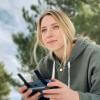
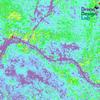













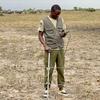





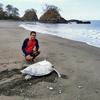

























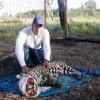










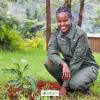

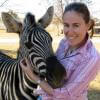







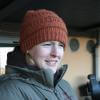
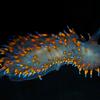



5 September 2024 8:51pm
I will check it out, thanks for your help!